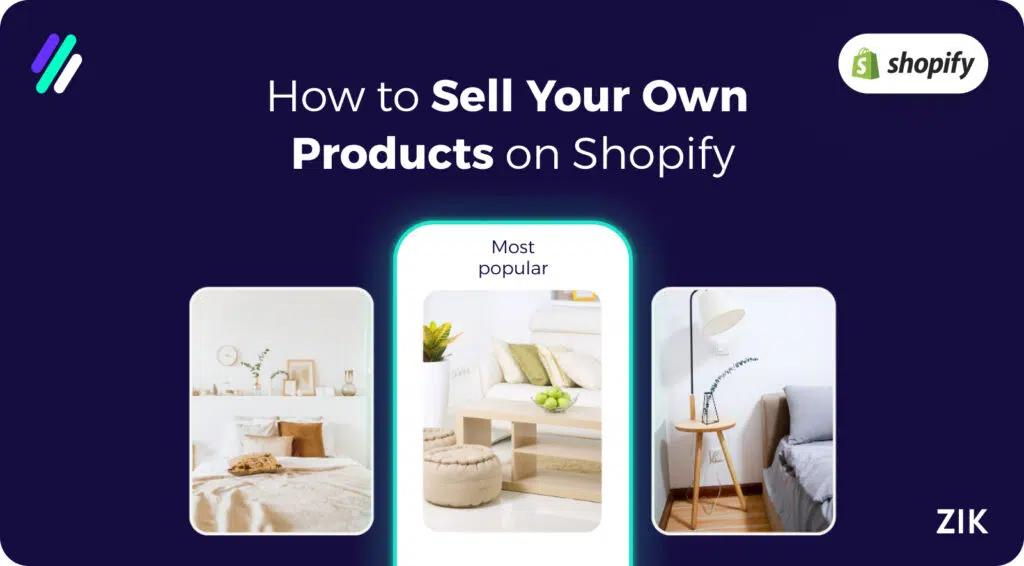Do you have a creative side and enjoy making your own products?
If you think your product creation is something that other people will find valuable, then why not consider selling it on your Shopify store? Nothing is more rewarding than seeing something you have created and generating a steady income stream.
If this sounds like you, then look no further because this guide will show you how to sell your own products on Shopify.
The common misconception among online sellers is that you must find suppliers for your Shopify store. The truth is that you can create your own products for your online store.
If you’re wondering: can I use my Shopify store to sell my products? The answer is a resounding yes.
The ability to sell products you’ve created is a testament to how versatile Shopify is as an ecommerce platform. Use this guide to learn how to build an ecommerce business using your own products. And before you launch, you can use AdSpy to see how competitors promote similar handmade or custom products, helping you shape stronger marketing strategies.

Key Takeaways
- Selling your own products involves brainstorming ideas for what products to make to ensure demand and sales potential.
- Knowing your target audience and their pain points, as well as analyzing market trends, can help you identify the best product ideas.
- Selling your products on Shopify offers scalability, control over inventory, and efficiency in managing transactions.
- The challenges of selling your own products on Shopify include pricing your products effectively, managing access to raw materials, and validating your product ideas.
- Discover the best strategies to set up your Shopify store and promote your products online.
How to Find Inspiration and Ideas When Creating Your Own Products
Are you on the lookout for new product ideas and inspiration? That one product idea could be the spark that ignites the success of your Shopify store!
However, coming up with new product ideas is easier said than done. Most product creators and online store owners who want to sell their own products tend to look for ideas that are the same as what everybody else offers.
There is nothing wrong with that. But if you want to succeed with selling your products on Shopify, make sure that your product idea meets the important tenets that will allow you to succeed when you sell on Shopify using your products.
Identify Your Target Audience
One of the best ways to generate a product idea for your online store is to start with your target audience. When starting a Shopify online store, it’s always important to know who your potential customers are. You are creating products for them, so you must know what they like (and don’t like), their age, buying behavior, and more.
Market research will help you find the essential information you need to develop the right products that allow your ecommerce business to succeed – and attract your target audience.
Know Your Customer Pain Points
The next step in determining the best product ideas for your ecommerce website on Shopify is to know your customer pain points. A product you create must address or solve your customer’s problems.
To do that, you must first identify the common challenges (pain points) your target customers face regularly. Once you have tapped into that, you can easily develop products to solve that problem.
If you’re unsure how to offer a solution, you can look at products currently in the market that aim to solve those pain points. Conducting research provides valuable insights into the shortcomings of these existing solutions.
Then, you can develop your own product that will address any shortcomings and offer better value.
Ask Your Customers
Another way to generate product ideas for your Shopify store is to ask your customers directly. If you want to attract potential customers, it is vital to obtain their insights and utilize them for product creation.
According to Henry Ford, your customers know best, so it is best to start with them when developing ideas for your business, especially for selling profitable products online.
Send them surveys or ask them to fill out questionnaires. Use their answers to identify gaps or problems.
Once you know the problem, you can conduct additional research to determine how to fix it and if customers are willing to pay. This process also lets you validate your product idea before beginning the development phase.
Study the Trends
Another way to develop new product ideas for your ecommerce business is to analyze the trends. The best place to look for trends is on social media platforms, such as Instagram or TikTok.
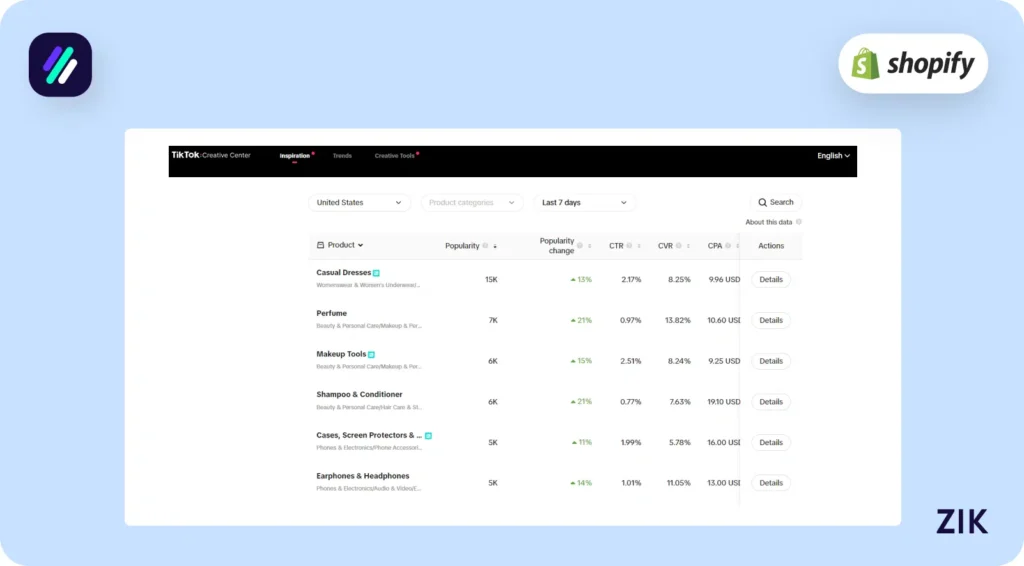
Once you identify trending products, think about how you can replicate those products’ success and improve them. Or can you make it more affordable?
Whether you offer something better in quality or price, improving the product’s overall value is crucial in developing product ideas for your online store.
However, jumping on trends is tricky, especially if you create your own products. If you are dropshipping, it’s okay to follow trends because you are not keeping an inventory of products.
However, creating your products based on trending ideas could be difficult because the moment the trend cools off, you’ve already lost a ton of products that probably won’t sell anymore.
Timing is crucial when following trends in developing products to sell online. It’s important to get on the trend before it cools off.
Also, it is important to weigh the demand to determine whether it’s worth jumping on the trend and how long it is forecasted to last.
Find High ROI Products
When you sell products online, knowing the return on investment (ROI) potential is crucial, and pursuing ideas that offer a high-profit margin for your ecommerce business.
Analyze the raw materials and processes you need to build a product from scratch. If you can get the raw materials in bulk, it will lower the cost of acquisition.
These factors into increasing your ROI potential for every product. The next thing you can do is do a competitor analysis and see what prices other sellers get for the same product.
It will help you determine the profit margin and assess if it’s worth making the product and how much profit.
Find Your Own Problem
You’re an online store owner, but you are first a consumer. When you’re out of product ideas, think about problems you encounter in your daily life and develop a product that offers a solution.
There is a good chance that the dilemma you’re facing is also affecting other consumers.
Back it up with market research to ensure you can attract potential customers for your product and that it has legs to stand on. Many successful products were built using this same approach, so don’t be afraid to look into this method for product creation.
Download this eBook to jump start your dream Shopify business today!Benefits of Selling Your Own Products on a Shopify Store
Shopify offers a great platform for selling items online, whether digital or physical. There are many benefits to selling your own products in your store, and I’ll discuss them here.
Complete Control Over Inventory
When you sell on Shopify using your products instead of finding suppliers, you have the flexibility to manage your product inventory. This makes it easier for you to know your stock levels and restock products that are in high demand.
This process gives you better control of inventory management because you know exactly when you need to produce more of the high-demand products and what items to remove from your inventory because they are not doing well in terms of online sales.
Ultimately, it helps you save on warehousing and storage costs because you are only managing items you need in your store. Aside from dealing with stocks and supplies, you have a better idea of how long it takes to ship items to your customers based on the product availability.
This approach to selling on Shopify is less stressful since no middleman is involved, and you eliminate the need to communicate each step with suppliers.
Scalability
Since you create your own product line for your store, you have better control over developing your product range. Based on your online sales and other analytics, you can add or expand on your products as you like.
This allows you to adapt as you increase demand while keeping your costs low. For example, if one of your products gains traction, you can consider developing new products to upsell or cross-sell your existing products in the store.
Specifically, you can explore new markets without any significant investment. It allows you to test without the risk of losing financially, especially if you want to expand into a global market.
Efficient Transaction
When you create and sell your own products, you eliminate the third party: the suppliers. You are directly communicating with your customers when they place an order instead of having to pass on the information to a supplier.
When you lose the middleman, you lower the risk that order information is confused or that the wrong products are shipped to your customers. This enhanced efficiency makes it possible to increase customer satisfaction.
Challenges of Selling Your Own Products on Shopify Store
If you want to sell your own products on your Shopify store, you must be aware of the potential challenges you might face. Knowing these challenges enables you to develop the best solutions for a higher chance of online selling success.
Validating Your Product Idea
It is one thing to develop product ideas for your online store, but it’s another to validate demand for that idea.
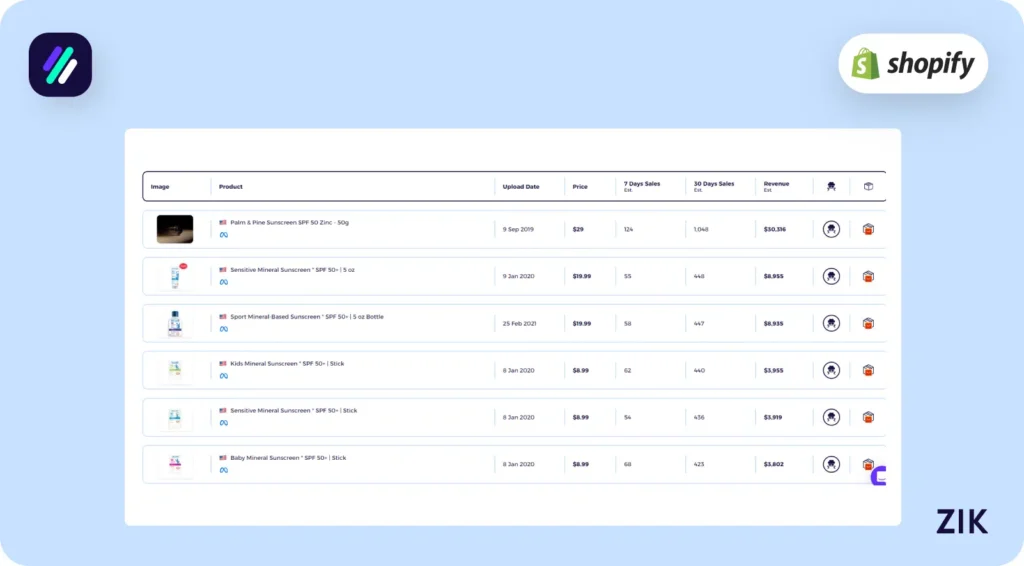
One of the major challenges when creating your own products is ensuring you can attract potential customers and make online sales. Product research tools, such as ZIK Analytics, can resolve this issue by providing valuable insights and customer data that benefit store owners.
Optimal Pricing Strategies
A tricky part of developing your own products for an ecommerce store is determining your pricing. Since you are sourcing the raw materials for your products, you become vulnerable to pricing changes for the raw materials.
You must consider all costs for self-produced items to maintain profitability.
On the other hand, if you work with suppliers, the prices remain intact, giving you more predictability regarding your revenue and costs. Knowing the prices from your supplier gives you a better idea of how to price your products, whereas creating your products will require much effort and strategizing.
Supply Chain
Finding suppliers for your raw materials can be challenging because your business depends on them. Without raw materials, you won’t be able to make your products.
You won’t have to deal with this issue when you have a supplier, but these are some challenges you must consider if you want to create your own products.
How to Sell Your Products on Shopify
Follow this detailed guide to sell on Shopify using your own products.
Step 1: Launching your Shopify online store.
Your Shopify store will become the foundation of your online selling journey. The first step to sell your products online is to build your ecommerce website on Shopify.
Creating your Shopify account is a straightforward process. Our guide provides more detailed information on how to start your Shopify store.
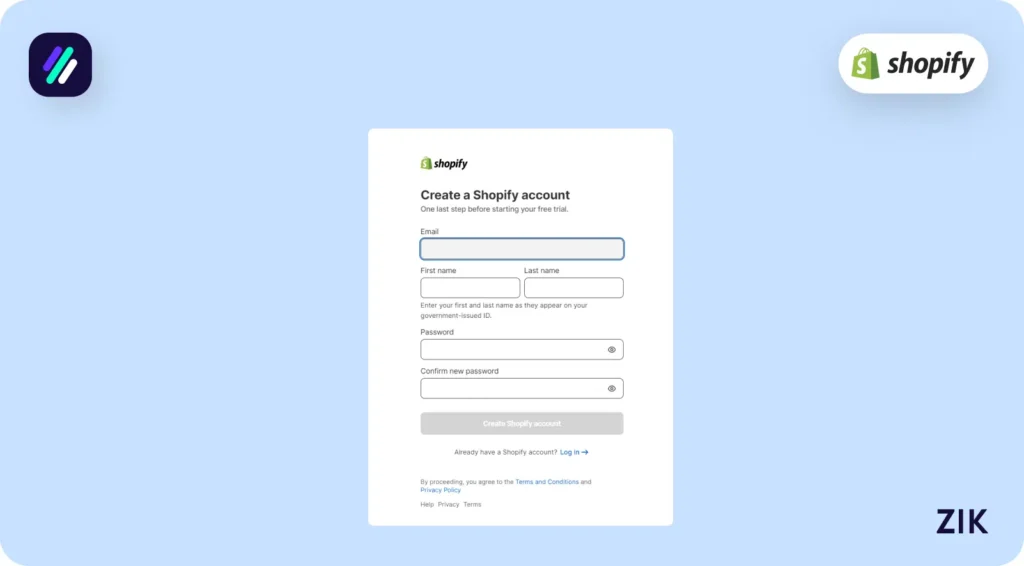
Once you have your Shopify account, you can access the tools you need to sell online and market your products by going to the Shopify admin dashboard.
You can choose a theme and customize other aspects of your store to be consistent with your products and branding. The idea is to build a store that showcases your products and brand in the best light possible.
But of course, your products are the highlight of your Shopify store. You created these products so give them justice by using high quality images. Using high quality images enables your potential customers to visualize your products.
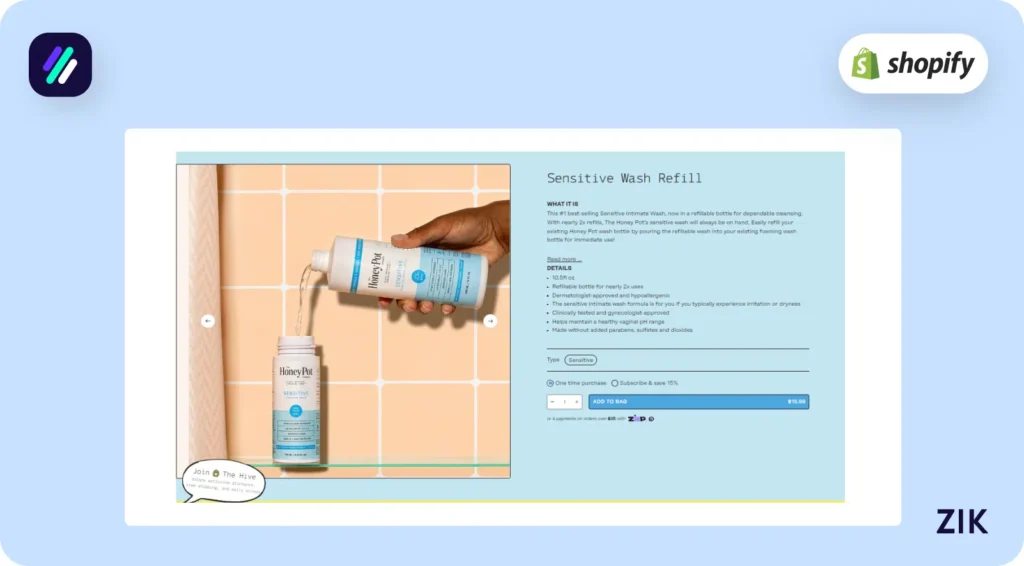
In addition to adding images and videos of products, create product pages with detailed information for each product. Use relevant keywords to describe your products online and make them easier to find on search engines.
But even when you are targeting relevant keywords, make sure to write your product descriptions with your customers in mind. Write the descriptions to entice and inform your target audience.
Finally, consider how to price your products. Your pricing strategy is crucial in determining your profit margin. Consider the costs of raw materials and the processes involved in creating such products.
Shopify offers built-in tools and third-party apps through the Shopify App Store to ensure store owners can manage their stock levels efficiently. Take advantage of these tools to ensure you can manage the products you sell on Shopify.
Step 2: Promoting and Growing Online Store
Once you get your Shopify store up and running, it’s time to think about promoting your products online. Shopify offers an entire ecosystem of tools and apps that make growing and promoting your store easy.
Marketing your products to attract your target customers requires strategic planning. When you create a business plan for your store selling your own products on Shopify, make sure to include your marketing strategies.
The best way to drive traffic to your online store and generate more online sales for your products is to use a combination of marketing strategies. Search engine optimization is one such strategy.
It involves using targeted and relevant keywords in the website copy, meta description for product pages, and product images. Keywords enable search engines to find your products and show up in search results for relevant searches.
Another way to optimize your marketing efforts is to use a combination of social media promotion, Shopify email marketing, and social media ads. Make sure to test the ad results, traffic, and conversions to ensure you can increase visibility for your own products you sell through Shopify.
Enhancing customer experience is also a big part of promoting your products online. When you offer exceptional service, you can enhance customer loyalty and ensure repeat business with your existing customers.
You must integrate a live chat feature on your Shopify storefront to promptly respond to customer queries or include customer reviews on product pages to help customers make their buying decisions.
Final Thoughts: Selling Your Own Products on Shopify
Creating your own products and selling them on your Shopify store is a rewarding experience. However, it’s rife with challenges that you must address properly to maximize profitability and grow your online business.
Follow the tips here on finding product ideas and creating products that would generate online selling success.
However, it pays to know that the ecommerce world is dynamic and ever-changing. Be open to learning and identifying new opportunities that force you to adapt your store to thrive.
Launch Faster with Shopify AI Store Builder
Ready to turn your product ideas into a real store? The Shopify AI store builder helps you set up your ecommerce shop in minutes—no tech skills needed. It auto-generates product listings, custom branding, and layouts to match your niche, so you can start selling your own products on Shopify right away.
Frequently Asked Questions on How to Sell Your Own Products on Shopify
Here are some frequently asked questions on how to sell your own products on Shopify
Can I sell my own products on Shopify?
Yes, you can sell your own products on Shopify by creating product listings with descriptions, images, and pricing. You can manage inventory, set up shipping, and accept payments directly through the platform, making it simple to run an online store for physical or digital goods.
How much does it cost to sell items on Shopify?
In the US, Shopify pricing starts at $19/month for the Basic plan, $49/month for the Shopify plan, and $299/month for the Advanced plan when billed annually. Extra costs may include transaction fees, payment processing charges, premium apps, domains, and themes.
Do you have to make your own products to sell on Shopify?
No, you don’t have to make your own products to sell on Shopify. Many sellers use dropshipping, print-on-demand, or wholesale suppliers instead. You can also resell curated items, provided they’re legal and not copyrighted, allowing flexibility in how you build your store.
Can you sell single items on Shopify?
Yes, you can sell single items on Shopify by creating a product listing with just one item available in stock. The platform allows limited-quantity or one-off sales, making it useful for unique pieces, collectibles, or testing demand before scaling inventory further.
How many stores can I run on one Shopify account?
A standard Shopify account allows you to operate one store. To run multiple stores, you need separate subscriptions for each. Shopify Plus users can manage multiple storefronts under one organization, but each store still has its own settings, themes, and billing.













